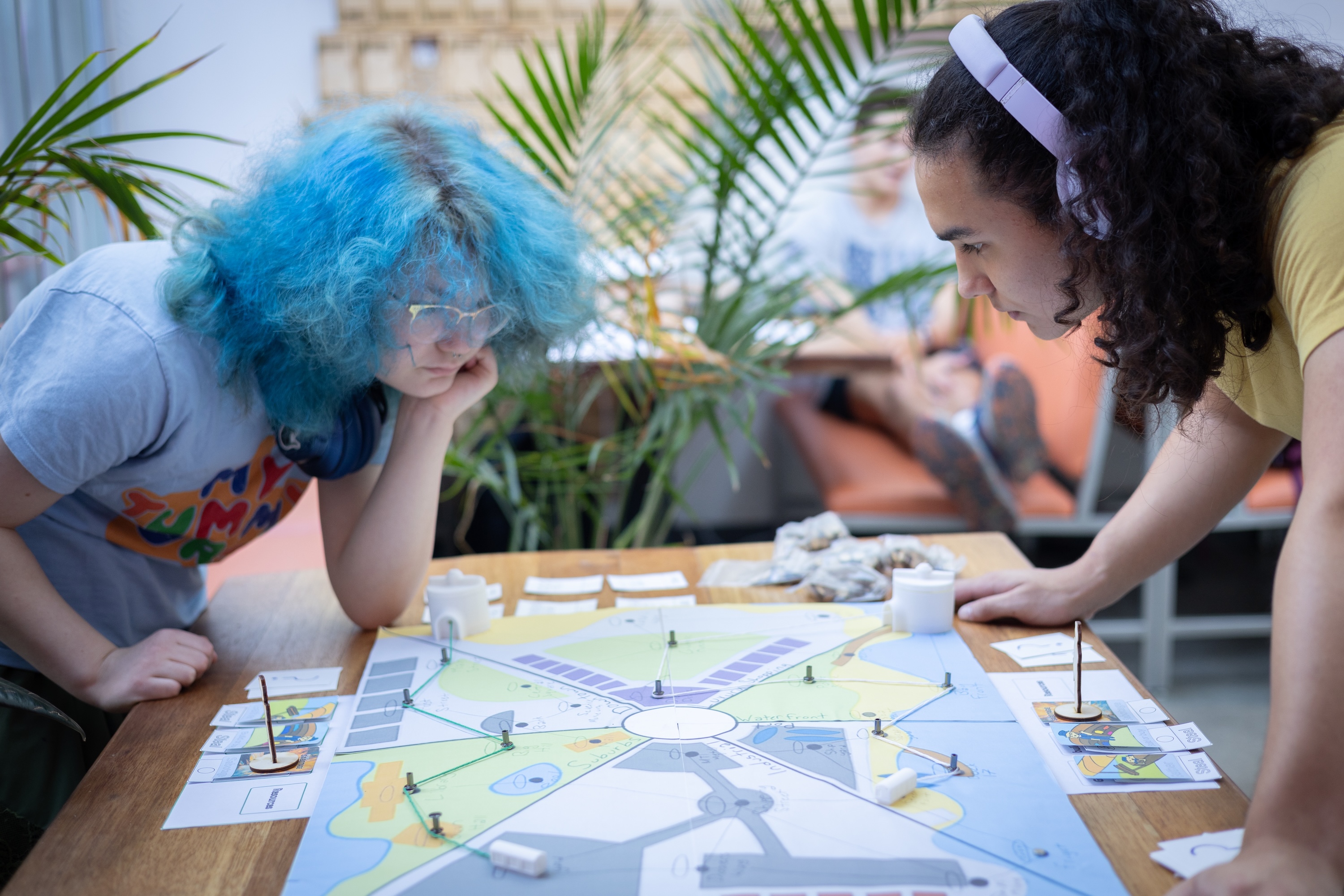October 6, 2025
Foundations of Design Thinking
“It comes down to understanding that there’s not a right and a wrong answer—that there are infinite answers to the same problem.”

All first-year students at NuVu High School take part in what’s called a Foundations Studio—a design studio initiation, if you will. While the studio itself has changed and evolved over the years, its essential purpose remains the same: to help new students discover exactly what a Design Studio is.
Coach Ryan Ferguson has taught Foundations Studio many times over the years, and he says it gives students the essential technical skills they’ll need as they move through NuVu’s design studio curriculum. “It’s similar to an orientation on the creative process itself,” he says. “It helps familiarize them with conceptual and abstract thinking, walks them through the iterative process of prototyping, prepares them for the feedback they’ll receive on those prototypes, and helps them reevaluate and rework prototypes for their final project.”
Learning how and why NuVu studios prototype—and the different purposes and roles that process serves—is a key takeaway from this foundational studio. As Ryan explains, being able to evaluate scale and ergonomics, along with the user design aspect of a prototype, is central to each student’s learning journey at NuVu. And it’s a journey that often takes a bit of understanding on the part of each new student.
“It is learning the process of seeing something physically in front of you and being able to assess its value, as well as understanding that a first attempt in a project usually won’t be the final one they make,” says Ryan. “They discover that their ideas are going to evolve—in some cases quite a bit—over however many weeks the studio is.”
This year, Ryan broke the studio into units. The first asks students to recreate a household object in three ways: hand-drawn to scale using orthographic projection; built as a low-fidelity prototype with cardboard, foam, or paper; and modeled in Rhino as a CAD file. After completing these, students write a short story from the object’s point of view. Finally, a fellow student reads and analyzes that story, identifying three themes or concepts they feel are most important to the object’s experience.
Those three themes then become the starting point for the second project in Foundations Studio. Here, students move from the literal to the abstract—from figurative to nonfigurative. They’re asked to represent ideas through form, drawing, and collage in a series of abstraction exercises. “This asks the question of how do you represent abstract things that are hard to represent?” shares Ryan. “It’s a great challenge for them.”
“It comes down to understanding that there’s not a right and a wrong answer—that there are infinite answers to the same problem.” —Coach Ryan Ferguson
Lastly, all of these skills come together in the final element of the studio, where students are asked to create an original board game. “They now take the technical skill building they did in the first project and the abstract thinking from the second project and mesh these to design and build a high-fidelity prototype of a board game. The games were created with a full set of rules, much testing, and iteration as well,” explains Ryan.
The games were inspired by systems students interact with daily. “It was pretty open-ended,” says Ryan. “They chose a wide range of topics to explore and ended up with a really broad range of different types of games.”
The board game becomes a great way to put all the pieces of Foundations Studio together into something new. As Ryan shares, “It becomes something they can use and take home to play with their family. It’s always fun to see them getting into the board games and really leaning into that process.”
Some of the games that resulted from the studio included Fish Plinko, where a student put significant effort into the design and fabrication of the game; Jaywalking, a playful and unique take on crossing busy streets; and Not Lost, a rescue game reminiscent of Battleship.
Coach Ryan says the biggest takeaway for new students is learning to be comfortable with the ambiguity of the design process. “It comes down to understanding that there’s not a right and a wrong answer, and that is really tough to learn—especially when they get into that second project—and that there are infinite answers to the same problem or the same prompt. They discover that it’s up to them to find the path forward and to synthesize feedback, as well as give each other feedback, too.”
Ultimately, Foundations Studio doesn’t just teach students how to prototype or abstract—it teaches them how to think, adapt, and embrace the unknown, which is the heart of every design journey at NuVu.






